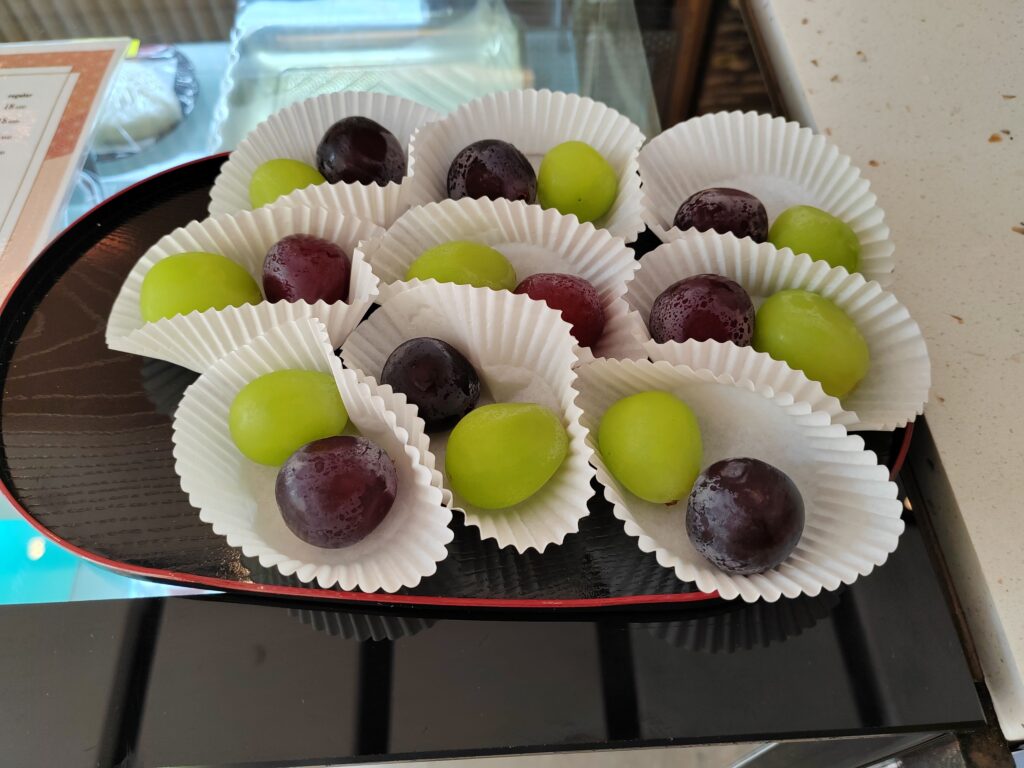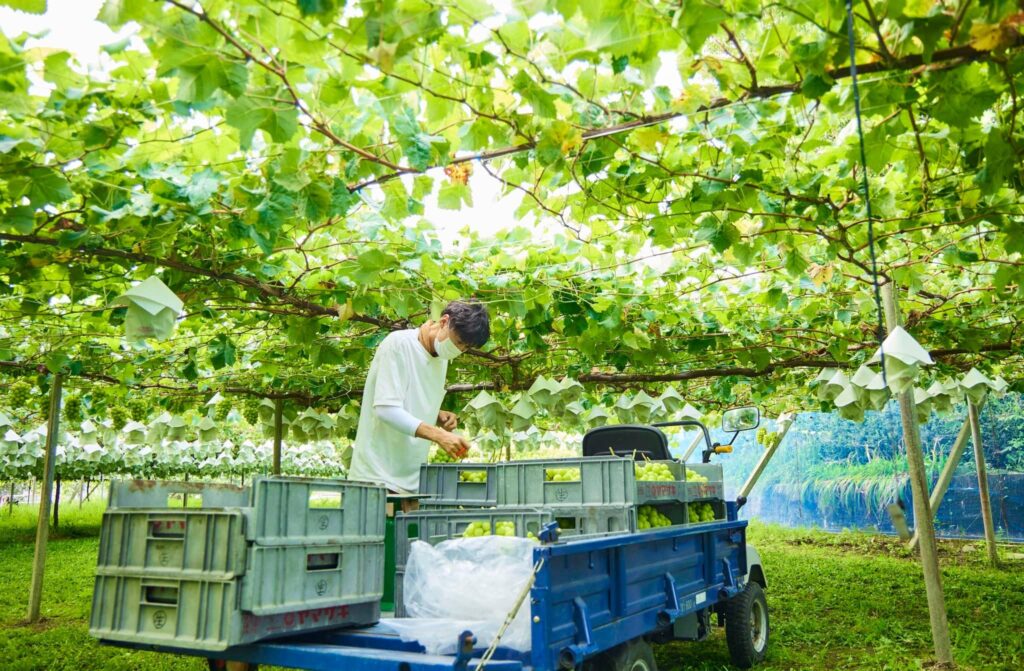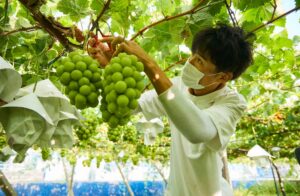



ABU DHABI: A campaign promoting Japan’s Yamanashi prefecture grapes was held recently at Ocha Cafe Sakura, where premium grade Shine Muscat Grapes and Pione Grapes were featured and being sold at the café.
Yamanashi prefecture is known as the kingdom of fruits, where the longest hours of sunshine in Japan and the rich nature promotes the sweet and tasty grapes. There’s also a difference in temperature between day and night, allowing the grapes to grow with the potent sweetness of Yamanashi.
Grape picking experiences are offered by several orchards throughout Yamanashi.

Yamanashi grapes have a long history of cultivation and currently have the highest production volume in Japan. The prefecture, with its favorable environmental conditions such as well-drained alluvial fans, long daylight hours, and temperature differences between day and night, is the perfect growing area for grapes. Yamanashi Prefecture is also a pioneer in developing a seedless grape cultivation technique known as “gibberellin treatment.”
In addition, thanks to the tireless efforts of growers, they are now discovering new varieties that are as beautiful as jewels and surprisingly delicious. The beautiful fruits and the journey through the vineyards are the real pleasure of grape picking.
Grapes produced in Yamanashi can be harvested from late May (cultivated in facilities) to late October. Even within that season, the season varies depending on the variety.
Although there are differences depending on the variety, grapes as a whole are fruits that do not last long. Therefore, it is necessary to eat the fruit as soon as possible after purchase, but if people want to store it for several days, it’s important not to wash the fruit until just before eating it.
The reason for this is that the white powder called ‘bloom’ that covers the fruit is not washed off. If it being washed off, the fruit will dry out and become easily damaged. Also, grapes with high sugar content and high-water content are more likely to rot or develop mold if left at room temperature.
Michyo Chiba, founder and owner of Sakura Japan Sweets told Arab News Japan: “This is our second year for featuring Yamanashi prefecture Japanese grapes at our café, where we are featuring Shine Muscat Grapes (green) and Pione Grapes (dark purple) and the farmers at Yamanashi prefecture are very careful with making the fruit in order to be fresh and tasty for everyone.”
“What makes the Yamanashi prefecture Japanese grape unique is the taste where Shine Muscat Grapes are being preferred for children who don’t like fruits as sort if candy, while the Pione Grapes are known for having rich flavor and stronger taste as it being consumed,” she added.